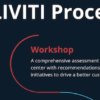How the “Guided Client Experience” makes the journey more efficient and fruitful
by Ryan Young and Joe Rice
The year was 1953. A British expedition team comprised of ten world-class climbers, under the disciplined leadership of Sir John Hunt, was growing increasingly weary, wary, and anxious. The June monsoon season and its perilous conditions of heavy snow, low visibility, and avalanche would soon be upon them. Yet they remained woefully short of the ultimate goal—cresting Mount Everest.
The adventurers reached a suitable staging area for a final push to the mountaintop on May 21. From there Hunt selected a two-man team of elite climbers for the initial attempt on the summit. The expert mountaineers courageously assaulted the veiled and foreboding rock. But dangerously short on oxygen and blinded by a thick cloud of wind-whipped snow and vapor, the duo made a hasty retreat, incapable of perceiving how close they were to completing the historic feat. It was later revealed the pair turned back a mere few hundred meters from the peak and a lifetime of fame and international notoriety.
Extreme urgency gripped the remaining climbers, as time for seizing the opportunity grew short. After carefully assessing each team member over the course of the expedition Hunt called on Edmund Hillary, a 33 year-old New Zealand beekeeper and arguably the most mentally and physically prepared mountaineer for navigating Everest’s steep and icy ascent. Then, in an inspired stroke of insight and wisdom, Hunt looked past his team of world renown experts and paired Hillary with Tenzing Norgay, a Nepalese Sherpa who only one year earlier led a Swiss team to within 1,000 feet of the untouched peak.
Equipped with knowledge from his previous attempt and a lifetime of experience at such imposing altitudes, Norgay skillfully and expertly guided Hillary on the fastest path for reaching the summit while minimizing risk. On May 29, 1953, just before noon, Norgay and Hilary reached the 29,035 foot apex—the first human beings to literally stand on top of the world. To this day Edmund Hillary is known as the “First Guided Client” to crest Everest.
You too are destined for great accomplishments. All you need is a capable, knowledgeable, highly experienced “Client Guide” for assessing, planning, and leading you on the best possible route for reaching your inspired goals.
In the world of enterprise Information Technology, ACLIVITI is that partner.
ACLIVITI is 100% focused on helping you execute cloud and managed IT transformation through Technology Value Rationalization (TVR™), a data-driven, fact-based discipline used for validating IT investment. We even invented a framework called APEX™ for facilitating the process.
You have a vision for aligning information technology and telecom with the organization and business processes that drive it. But figuring out a workable timeline, transition plan, and cost/ROI models in support of the specific business cases involved is a daunting challenge. As your partner, the ACLIVITI team helps you analyze, plan, evaluate, and execute transformational strategies that rationalize the business value of your IT investments. Program and Project Management services are included in the solution eXecution phase to help accelerate the transition.
TVR benefits enterprise IT on two levels: 1) TVR justifies and logically explains why specific technologies are used and at what cost (your precise Business Case); 2) makes your organization more efficient by rethinking IT to eliminate unnecessary cost and waste.
IT is how business gets done in the modern enterprise. From financial reporting, to supply chain integration, to e-commerce, to payments, to client and team member engagement—IT is both a business enabler and strategic advantage in your quest to acquire and retain loyal customers.
But strategic advantage does not come from the technology itself. It is gained and maintained through process alignment and relentless focus on technology’s capacity for achieving and continuously improving business outcomes. Technology Value Rationalization (TVR™) is your means for ensuring you have the right technology for the right use, at the right time, at the best possible cost—all based on value delivered to the business.
Discover What CCaaS Is












